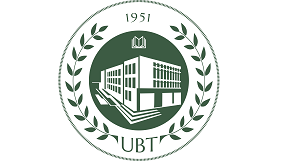NEHAT ÇOLLAKU, ELVIN TOROMANI, VALBONA SIMIXHIU, ERION ISTREFI
Agricultural University of Tirana, Faculty of Forestry Sciences, Forestry Department, Tirana, Albania
Ministry of Environment, Tirana, Project of Environment Services, Tirana, Albania
*Corresponding author e-mail: nehatcollaku@ubt.edu.al
Abstract
The analysis of the present state of nature and the impacts of the land use in the Divjaka National Park, aimed to identify its scenarios for the future development. The used methodology was Land Use Planning Process (LUPP), which consists on the systematic assessment of land and water potential, alternatives for land use and economic and social conditions in order to select the best land use options. For this diagnosis, we have collected the relevant information on the situation of the land, land use, biodiversity and the socio-economic framework conditions. The applied methods during the fieldwork comprised site and vegetation surveys on selected sample plots and open interviews with local representatives of the major interest groups. The collected data served as the basis for the following planning process. Following the “FAO Guidelines for land – use planning 1993”, there were distinguished the major different land mapping units (LMUs) and their qualities, as well the major land utilization types (LUTs) and their requirements. The results show that in the Divjaka National Park there were distinguished 9 LMUs and 8 LUTs. Through the matching of the LMUs with the LUTs, the potential land use situation was compared to the actual, there were identified the major land use conflicts. Based on the land use planning carried out in the Divjaka National Park, there are proposed three different scenarios for possible future development, focused on: a. Maximum Tourism Development; b. Strict Nature Protection; c. Integrated Ecotourism Concept.
Keyword: land use planning, analysis, land units, assessment, conflicts, scenarios.

